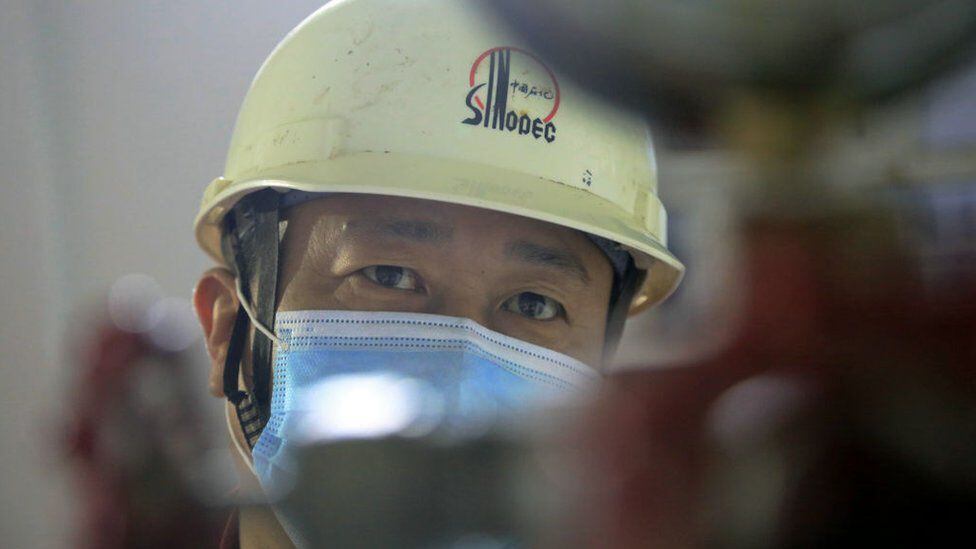China has begun to dig a huge hole that will exceed 11,100 meters deep.
Work began last week in Taklamakan, the world’s second largest dune desert, located in the northwestern Xinjiang Uyghur Autonomous Region.
LOOK: 3 keys to understanding the scandal that caused Gustavo Petro’s break with his inner circle
The hole will go through more than 10 continental strata and will reach layers dating to the Cretaceous period of the planet, between 145 and 66 million years ago, reported the state news agency Xinhua.
The project has an expected duration of 457 days in which the operators will handle more than 2,000 tons of equipment and machinery.
An ambitious initiative
This is the largest excavation project in China, which will break the 10,000-meter barrier with a well for the first time.
The hole that China drills will not, however, be the deepest man-made.
That record is held by the Kola super-deep drilling well in Russia, whose excavation lasted for almost two decades until it reached 12,262 meters in the year 1989.
China’s initiative comes at a time when this country is taking important steps in its consolidation as a global technological and scientific power.
Curiously, the same day that work began on the new well, Beijing sent three astronauts to its orbital space station as part of his project to step on the Moon before 2030.
But why drill a hole deeper than the height of Everest and close to the maximum flight altitude of a commercial airliner?
the two purposes
State petrochemical corporation Sinopec, which is leading the project, declared its goal to “expand the limits of depth” in geological exploration.
Work to drill the deepest hole in China has begun two years after the country’s president, Xi Jinping, urged the local scientific community to advance in exploring the depths of the earth’s crust.

“The drilling of the well has two purposes: scientific research and find gas and oil“said Lyu Xiaogang, representative of the China National Petroleum Corporation (CNPC), the country’s largest oil and gas company and one of the largest in the world.
In an explanatory video, the official assures that the project will serve to strengthen the technological capabilities of PetroChina (the business giant controlled by CNPC that is listed on the Hong Kong stock exchange) in deep excavations and manufacture of new machinery.
“To study the 10 kilometers closest to the surface, we usually use other techniques such as seismic tomography and other types. These types of projects are very useful because they provide physical evidence to support this investigation,” Chilean geophysicist Cristian Farías explained to BBC Mundo. Director of Civil Works and Geology at the Catholic University of Temuco.
In addition, he assures, the China project “allows us to test the most innovative technological advances”, for which reason “it can open a very interesting period of exploration”.
gas and oil
Regarding the second objective, CNPC indicated that it is exploring new ultra-deep oil and gas fields in the northwest of the Asian country.
Hydrocarbon deposits at extreme depths of the subsoil -generally below 5,000 meters- are usually located in marine areas, such as the oceans, where the rock and sediment layers are thicker, although they are also found in certain terrestrial areas, such as basins. deep sedimentary.
This is the case of the Tarim basin, where the Taklamakan desert is located, it can host large reserves of oil and natural gas.

However, its exploitation presents, according to experts, significant technical and technological challenges due to the difficult subsoil conditions, such as high pressure and extreme temperatures.
“And the stability of that hole is also a great challenge,” says Professor Farías
Although the former Soviet Union managed to exceed 12 kilometers deep, experts say that reaching such low levels of the earth’s crust remains extremely complex today.
“The difficulty of building this drilling project is like drive a big truck on two thin steel cables“, illustrated Sun Jinsheng, a scientist at the Chinese Academy of Engineering, in statements to the Xinhua agency.
In addition, the Taklamakan Desert is considered difficult territory to work in, with extreme temperatures dropping as low as -20ºC in winter and rising to almost 40ºC in summer.
Source: Elcomercio
I am Jack Morton and I work in 24 News Recorder. I mostly cover world news and I have also authored 24 news recorder. I find this work highly interesting and it allows me to keep up with current events happening around the world.

:quality(75)/cloudfront-us-east-1.images.arcpublishing.com/elcomercio/3SIYY7ZXU5G6BIP5NEAPS32W3E.jpg)

:quality(75)/cloudfront-us-east-1.images.arcpublishing.com/elcomercio/BCSMMVSWKFCRTACJMMSSD5LRQM.jpg)
:quality(75)/cloudfront-us-east-1.images.arcpublishing.com/elcomercio/PMF4WL6OIFASVJU4KDSV3VTAYQ.jpg)
:quality(75)/cloudfront-us-east-1.images.arcpublishing.com/elcomercio/TEEPYWBZPZBABLVDZ3XD2WOSW4.jpg)

